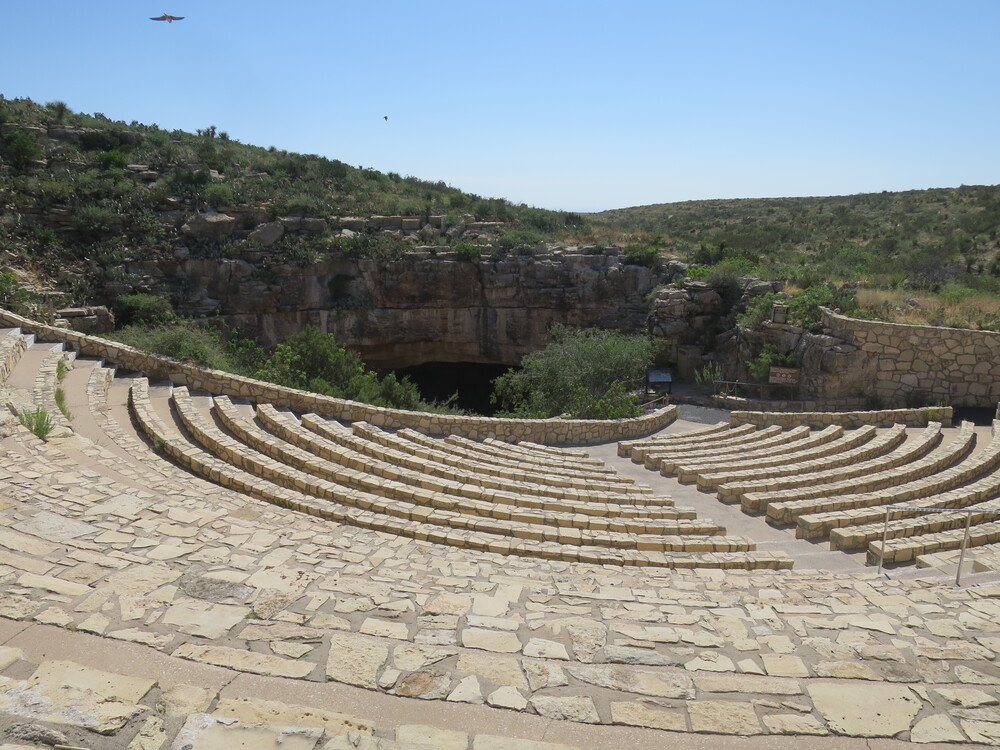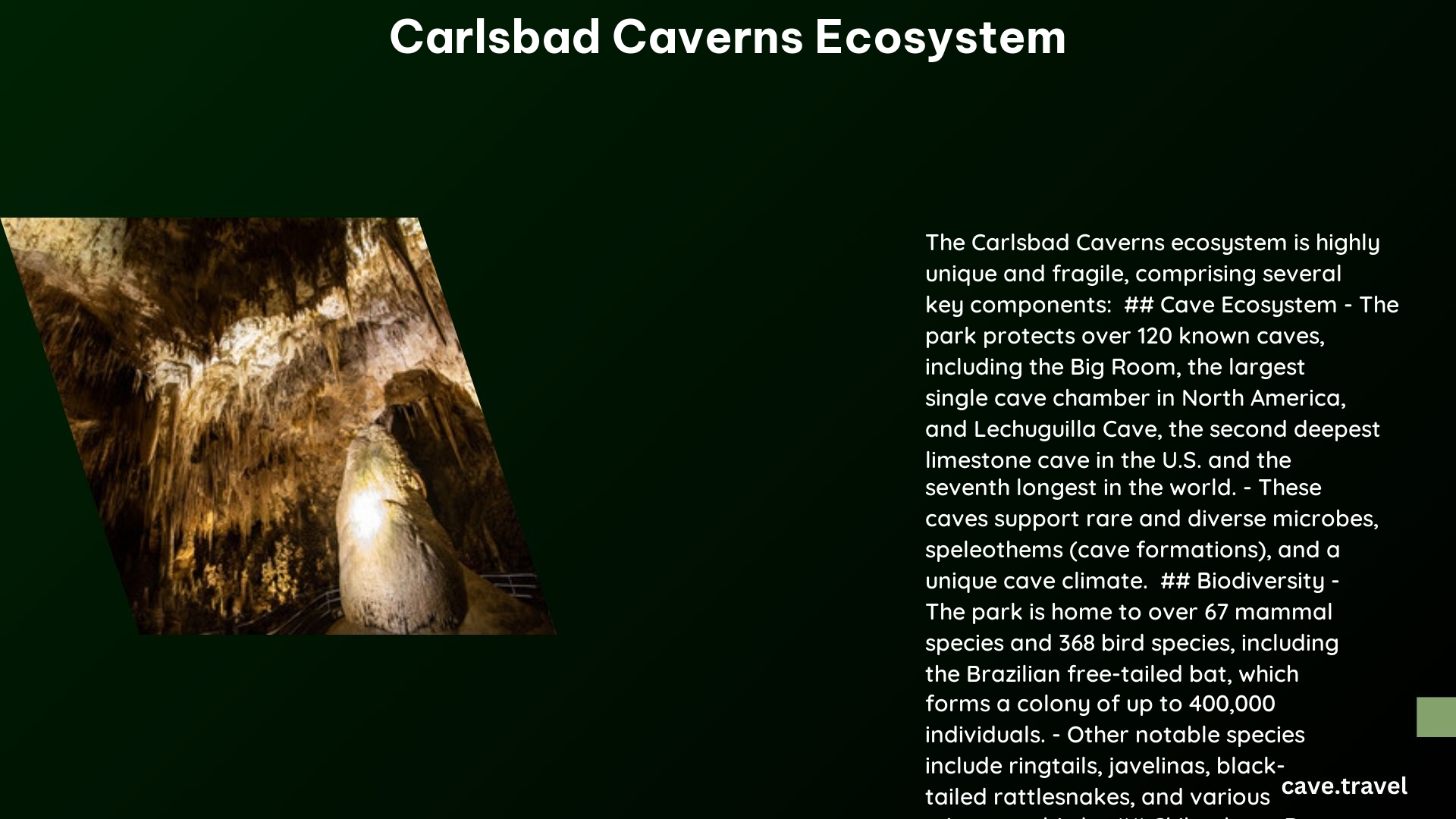Carlsbad Caverns National Park hosts a complex ecosystem encompassing diverse ecological interactions, endemic species, and varied habitats. This underground wonderland, formed over millions of years, supports a delicate balance of life from bats to microorganisms. The park’s ecosystem extends beyond the caves, including Chihuahuan Desert grasslands and coniferous forests, creating a rich tapestry of biodiversity.
What are the Key Components of the Carlsbad Caverns Ecosystem?

The Carlsbad Caverns ecosystem comprises several interconnected elements:
- Cave formations
- Unique cave-dwelling species
- Bat colonies
- Surface flora and fauna
- Atmospheric conditions
- Nutrient cycles
Each of these components plays a crucial role in maintaining the delicate balance of this underground world.
How Do Bats Contribute to the Carlsbad Caverns Ecosystem?

Bats are a cornerstone species in the Carlsbad Caverns ecosystem:
- Brazilian free-tailed bats form one of the largest colonies in the northern hemisphere
- They consume vast quantities of insects, helping to control pest populations
- Bat guano provides nutrients for cave-dwelling organisms
- The bats serve as prey for other predators, contributing to the food web
The presence of these bats significantly influences the cave’s ecology and even impacts the surrounding desert ecosystem.
What Unique Species Call Carlsbad Caverns Home?
Carlsbad Caverns hosts a variety of endemic and rare species:
| Species Type | Examples |
|---|---|
| Cave-dwelling | Cave crickets, mites, spiders |
| Bats | Brazilian free-tailed bats, cave swallows |
| Surface animals | Cougars, reptiles |
| Plants | Ponderosa pine (at its eastern limit) |
These species have adapted to the unique conditions of the caves and surrounding desert, forming intricate ecological relationships.
How Does the Cave Environment Shape the Ecosystem?
The cave environment at Carlsbad Caverns creates unique conditions that shape its ecosystem:
- Stable temperatures year-round
- High humidity levels
- Absence of light in deep cave areas
- Limited nutrient availability
These factors have led to the evolution of specialized cave-dwelling organisms and unique adaptations among the cave’s inhabitants.
What Role Does Nutrient Cycling Play in the Carlsbad Caverns Ecosystem?
Nutrient cycling is crucial to the Carlsbad Caverns ecosystem:
- Bat guano serves as a primary nutrient source for cave organisms
- Surface runoff brings organic matter into the caves
- Microorganisms break down organic material, releasing nutrients
- Cave-dwelling invertebrates feed on microorganisms and detritus
- Predators in the caves consume these invertebrates, completing the food web
This delicate nutrient cycle supports the diverse life forms within the caves and is sensitive to external disturbances.
How Do Surface Ecosystems Interact with the Cave System?
The surface ecosystems of Carlsbad Caverns National Park are intricately linked with the cave system:
- Water percolating through soil and rock carries nutrients into the caves
- Surface vegetation affects the quality and quantity of water entering the caves
- Animals move between surface and cave environments, transferring energy and nutrients
- Air exchange between the surface and caves influences cave climate and atmospheric composition
These interactions highlight the interconnectedness of the park’s diverse habitats.
What Threats Face the Carlsbad Caverns Ecosystem?
The Carlsbad Caverns ecosystem faces several threats:
- Human disturbance (e.g., littering, unauthorized exploration)
- Climate change impacts on surface and cave environments
- Air pollution from nearby industrial activities
- Invasive species introduction
- Alterations to water flow patterns
Conservation efforts focus on mitigating these threats to preserve the unique ecosystem for future generations.
How Does Air Quality Affect the Carlsbad Caverns Ecosystem?
Air quality plays a significant role in the health of the Carlsbad Caverns ecosystem:
- Nitrogen and sulfur deposition from air pollution can alter nutrient cycles
- Pollutants can impact sensitive plant species and lichens
- Mercury contamination can affect wildlife, including bats
- Changes in air composition can influence cave formation processes
Monitoring and managing air quality is crucial for protecting both surface and cave ecosystems within the park.
What Conservation Measures Protect the Carlsbad Caverns Ecosystem?
Several conservation measures are in place to protect the Carlsbad Caverns ecosystem:
- Restricted access to sensitive cave areas
- Visitor education programs
- Ongoing scientific research and monitoring
- Collaboration with surrounding land managers to address regional environmental issues
- Implementation of best practices for cave conservation
These efforts aim to balance public access with ecosystem preservation, ensuring the long-term health of this unique underground world.
References:
1. https://npshistory.com/publications/foundation-documents/cave-fd-overview.pdf
2. https://www.nps.gov/articles/airprofiles-cave.htm
3. https://apnews.com/article/carlsbad-caverns-national-park-cheetos-04f30c48dfa7fa3deee29702e083aa56
